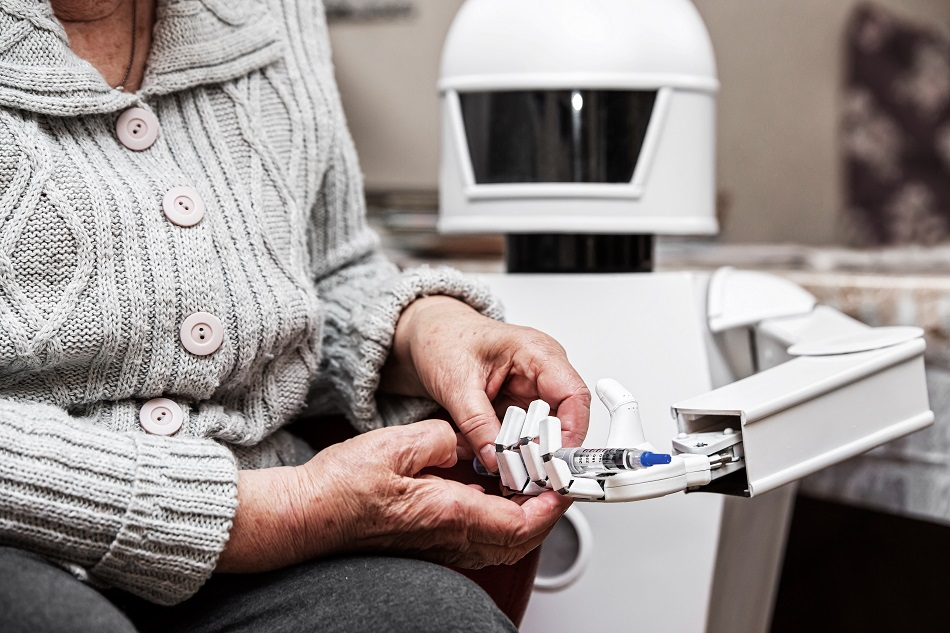Aug 23 2012

Image Credit: Miriam Doerr Martin Frommherz/Shutterstock.com
With novel medicines and continuous efforts to improve ways on how to combat age-related diseases such as Alzheimer’s disease, researchers are beginning to see an increase in the number of elderly people in need of a caregiver. Based on statistics from the World Health Organization, between the period of 2000 and 2050, the global population over the age of 60 will double from 11% to a weathered 22%. When considering the number of people currently alive, a 22% rise in the aging population is the equivalent of 2 billion people by the end of 2050.
There is both a struggle and pressure on healthcare institutions across the globe to address the issue of elderly care. In essence, the functional capacity of how well the human body ages is a big contributor to a climb in the aging population. Older people find it increasingly difficult to look after themselves, especially those who reside in developing countries and have problems maintaining mobility or managing mental health problems. There is also the issue of healthcare costs – elderly people living in low and middle-income families struggle to afford adequate healthcare services which are essential in securing their physiological well-being.
Robots in Providing Elderly Care
In a world where there is pressure to reduce healthcare costs and maximize services, the chances of receiving a caregiver for each elderly individual is a waiting game. However, one development that stands out in today’s healthcare activities is the integration of modern technology to assist with patient care. The idea of robotic technology to replace human caregivers has been taken from concept to completion in some parts of the world. An example of this would be in Japan, where the life expectancy is already among one of the highest globally.
Nursebots
The Nursebot (also called ‘Twendy-One’), a project created by researchers at the Waseda University in Tokyo, can be used to clean floors, assist in carrying an elderly patient, and facilitate functional abilities such as preparing and serving food to patients.
Twendy-One was designed with arms and hands to resemble the structure of a female human body, which will help welcome communication between the robot and the elderly patient. With seven degrees of freedom to the arm structure and thirteen degrees of freedom to the four-finger-hand, Twendy-One is capable of being able to manipulate objects manually with a high degree of precision and flexibility.
The development of Twendy-One pressured contemporary researchers to build humanoids that are as tactile as possible so that human–robot interaction does not feel alienated. Twendy-One’s fingertips were made from soft tactile material and were designed to mimic the curvature of a human hand. With six-axis force sensors installed into the robot’s hand, any physical contact the robot may make (i.e., hold a human hand) is immediately conveyed via an electrical pathway to the controller.
Twendy-One is also able to adapt to physical pressure applied by humans, which will encourage a learning behavior to help enhance communication between the robot and human. Researchers at Waseda University addressed the objective of a human-friendly robot by creating an outer shell to the robot that encapsulates all the electronics keeping this network out of sight to the human eye – the emphasis to make the robot as tactile as possible.
Manual handling by the robot, meanwhile, is possible through actuators installed into the joints of its arms which help support the human body. Every robot structure needs a controller to interpret the incoming information from the sensor network to power the actuators; Twendy-One’s controller is confined to the backpack built on this robot. There is also an LED pack situated on the chest area to Twendy-One that delivers a visual display of the robot’s internal condition.
Twendy-One is just one of the pioneer humanoid prototypes that were believed to provide care for the elderly. Some key developments in this project were the robot’s ability to manipulate and adapt to its environment with the benefit of a highly-sophisticated mechatronic structure.
The creation of Twendy-One has inspired researchers to develop further integrations of technology into healthcare systems. While current robotic technologies geared towards elderly care offer similar features to Twendy-One, the key concern among industries is to create robots that are more affordable for consumers in the healthcare sector.
Sources and Further Reading
This article was updated on 6th February, 2020.